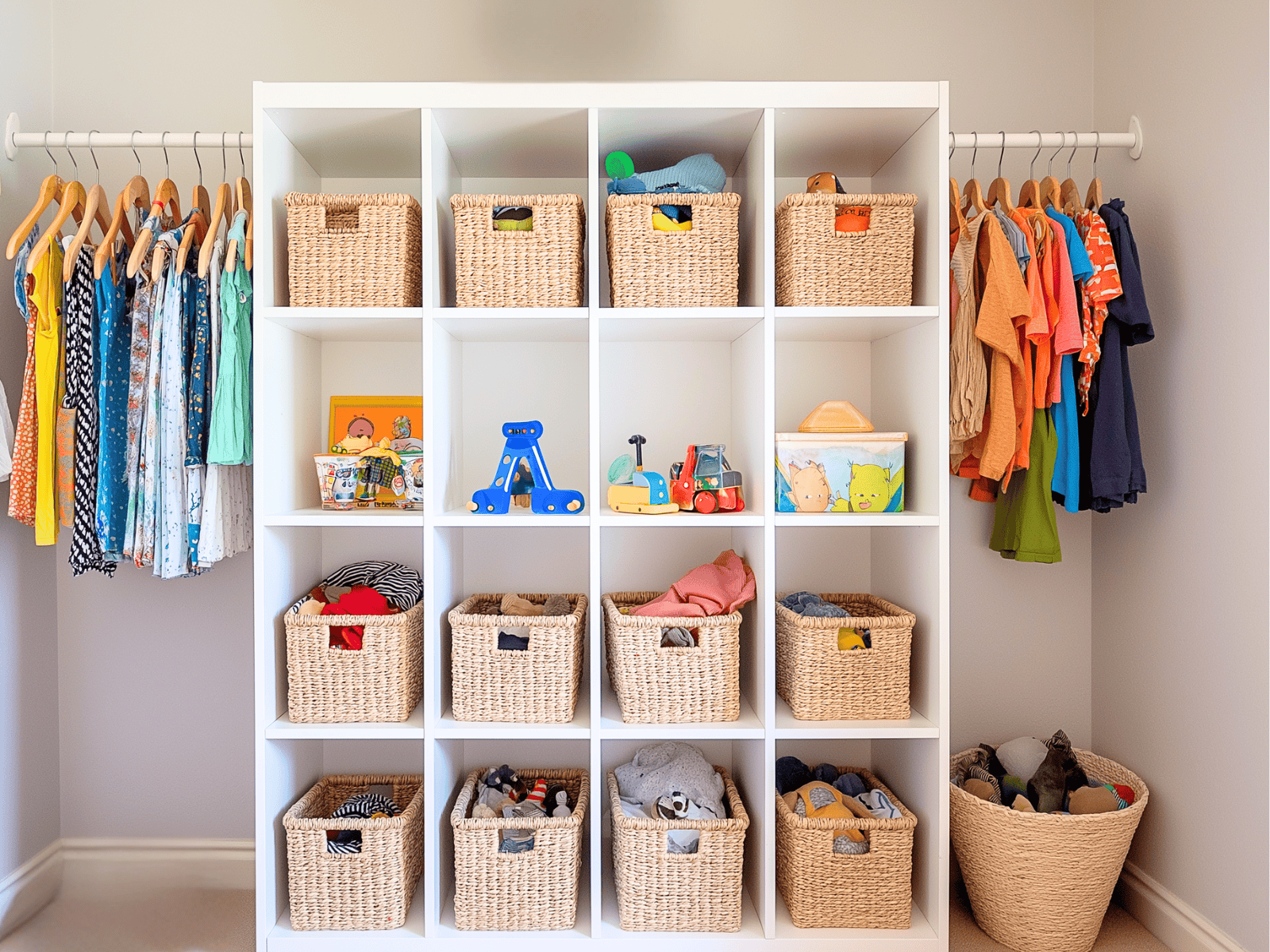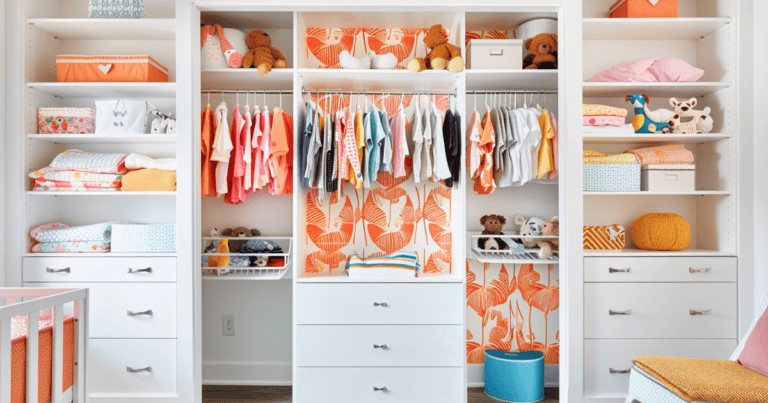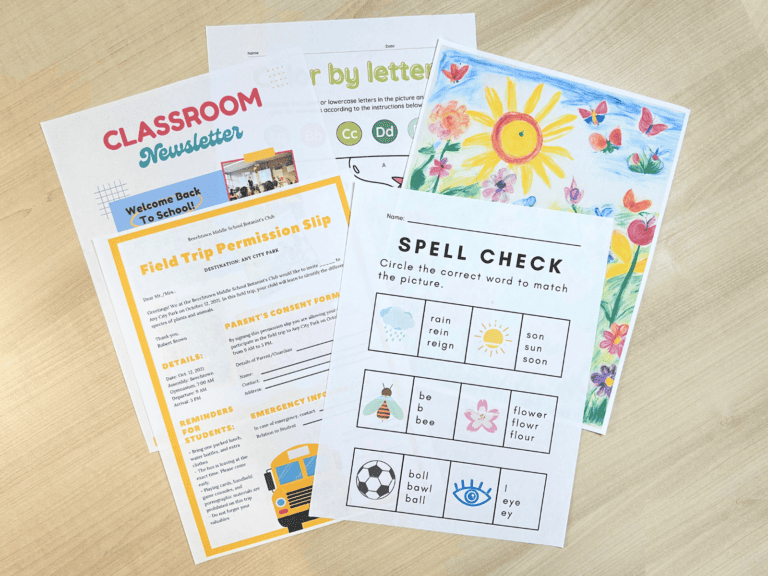How To Organize Kids’ Clothes To Save Time
Is your morning routine a chaotic scramble through piles of kids’ clothes? You’re not alone. Many parents face the daily battle of finding matching outfits amidst the clutter. It’s frustrating, time-consuming, and starts the day on a stressful note.
But what if there was a better way? Imagine smooth mornings where outfits are easy to find, and your kids dress themselves without a fuss. It’s possible with the right system in place.
This guide will walk you through a simple, effective method to organize kids’ clothes. You’ll learn how to cut through the chaos and create a manageable wardrobe that saves you time and sanity. No more lost socks or mismatched shirts—just easy, stress-free mornings.
Ready to transform your kids’ closet from cluttered to organized success? Let’s get started on your path to simpler mornings and happier kids.
The Hidden Costs of Clothing Clutter

Clothing clutter costs more than just closet space. It steals your time and peace of mind. Every minute spent searching for a matching outfit is a minute lost from your day. These lost moments add up, turning mornings into a race against the clock.
But it’s not just about time. Clutter creates stress for the whole family. Parents feel frustrated and overwhelmed. Kids sense this tension, making them anxious or resistant to getting dressed. This stress can set a negative tone for the entire day.
There’s also a financial cost to consider. Overbuying clothes is easy when you can’t see what you already have. You end up with duplicates or items that never get worn. This wastes money that could be better spent elsewhere.
Preparing for a Clothing Revolution
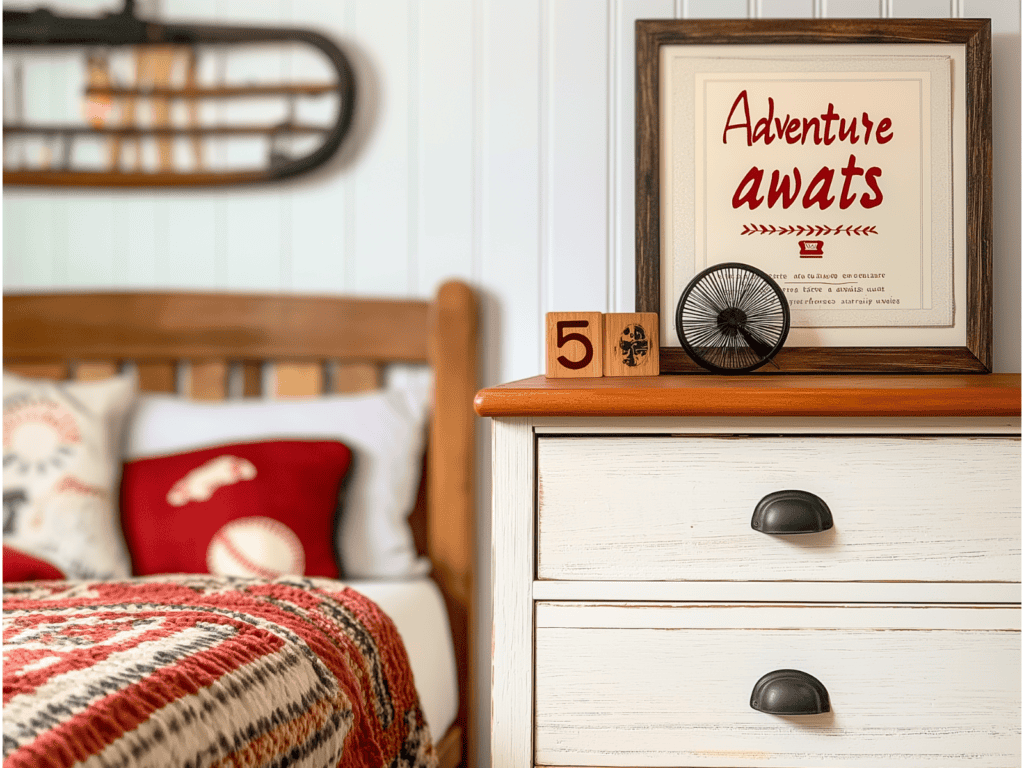
Declutter
Start by thoroughly decluttering your wardrobe. Remove outgrown, worn-out, or rarely-used items to create a clean slate. This will make it easier to see what you have and what you need.
Set realistic goals
Don’t aim for perfection; start small. Organize one drawer or category at a time. Small successes lead to bigger changes.
Involve your kids
Let them help sort and decide what to keep. This teaches valuable skills and gives them a sense of ownership, making them more likely to maintain the system.
Make it fun. Turn organizing into a game. Who can fold the most shirts or match the most socks? This positive approach makes the task enjoyable for everyone.
Remember, the perfect system is one that works for your family. Be patient and flexible as you find your solution. What works for one family might not work for another, so adjust as needed.
The “Capsule Wardrobe” Approach for Kids
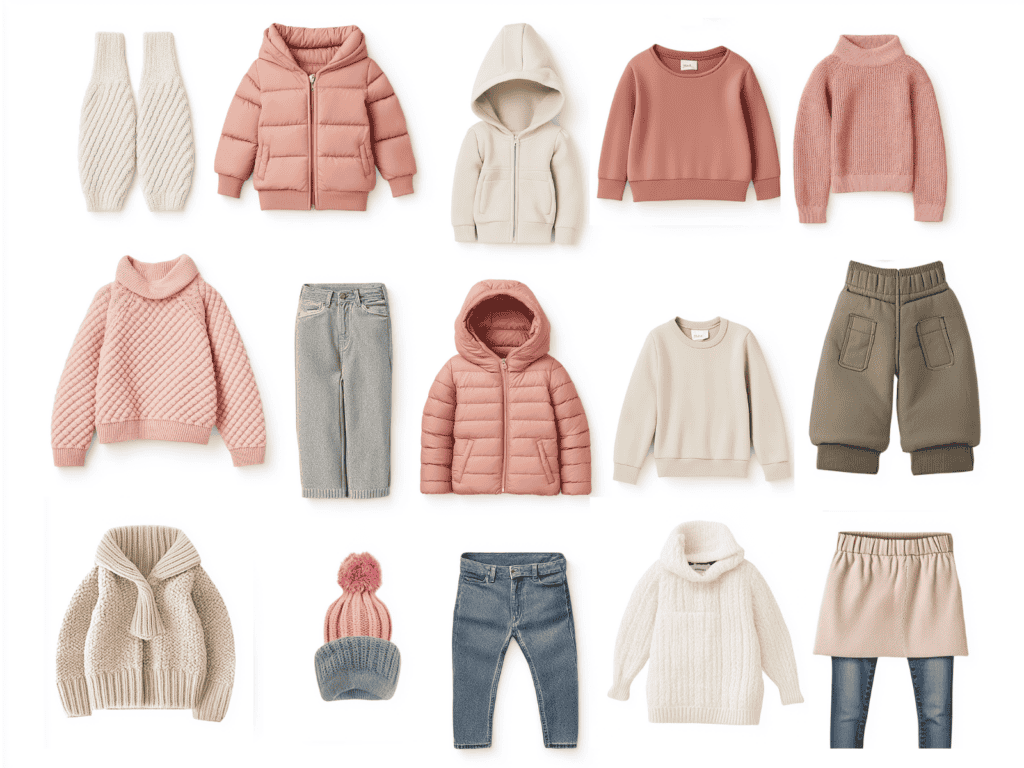
A capsule wardrobe is a small collection of versatile clothes that can be mixed and matched. For kids, this means fewer but more functional pieces. Think quality over quantity.
This approach offers several benefits. Kids learn to make choices and be creative with their outfits, and parents spend less time on laundry and shopping. It’s a win-win that simplifies life and teaches valuable lessons.
To create a seasonal capsule wardrobe:
- Choose a color palette that allows easy mixing and matching.
- Select 10-15 tops and 5-7 bottoms that work well together.
- Add a few layering pieces like sweaters or jackets.
- Include 3-5 pairs of shoes for different activities.
- Don’t forget basics like underwear and socks.
Use space-saving hangers to maximize closet space. Slim, velvet-covered hangers save room and prevent clothes from slipping off. This small change can significantly increase your storage capacity.
The “Weekly Outfit Planner” Method
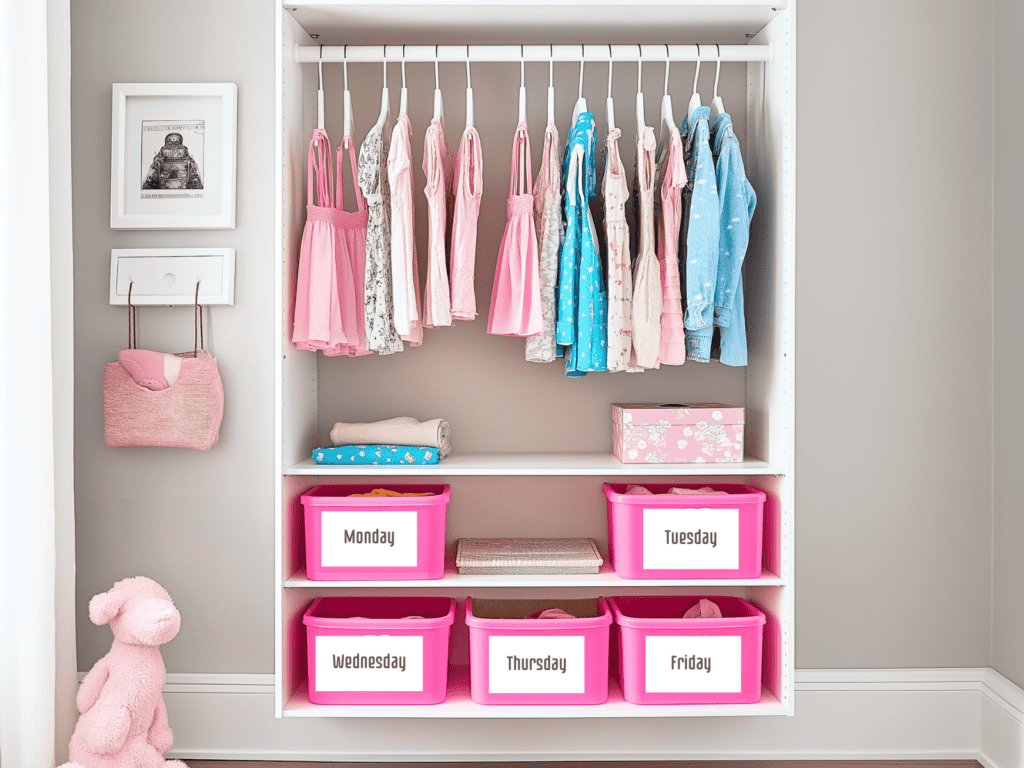
Planning outfits in advance is a game-changer. Set aside time each weekend to plan the week’s outfits with your child. This prevents morning rush and indecision.
For younger kids, use visual aids. Take photos of complete outfits and display them on a weekly chart. Your child can easily pick their outfit each day, fostering independence.
I prefer the “7-bin method.” Use seven small bins, one for each day of the week. Place a complete outfit, including underwear and socks, in each bin. Label the bins with days of the week or numbers.
This system offers several advantages:
You can place these bins on a low shelf or in a drawer for easy access. Each morning, your child simply grabs the bin for that day. You can refill the bins together at the end of the week, involving your child in the process.
This method combines planning with independence, making mornings smoother for everyone. It’s especially helpful for younger children or those who struggle with choices.
Tackling Special Categories

Clothing Rotation
Implement a clothing rotation system for growing kids. Review their wardrobe every few months. Move clothes that are becoming too small to a ‘soon to outgrow’ section. This helps you plan ahead for replacements and keeps the active wardrobe functional.
Seasonal Clothing
Seasonal wear needs its own space. Store off-season clothes in labeled bins. This keeps the current wardrobe manageable and makes seasonal transitions easier.
Sports Clothing
Sports uniforms and equipment deserve a dedicated area. Hooks for uniforms and bins for equipment should be used. Keep them easily accessible but separate from everyday wear.
Dress Clothes
Special occasion outfits can be stored in garment bags or a separate section of the closet. Label them clearly to avoid confusion. Consider keeping a small emergency kit with stain removers and quick-fix items nearby.
Laundry Management Tricks
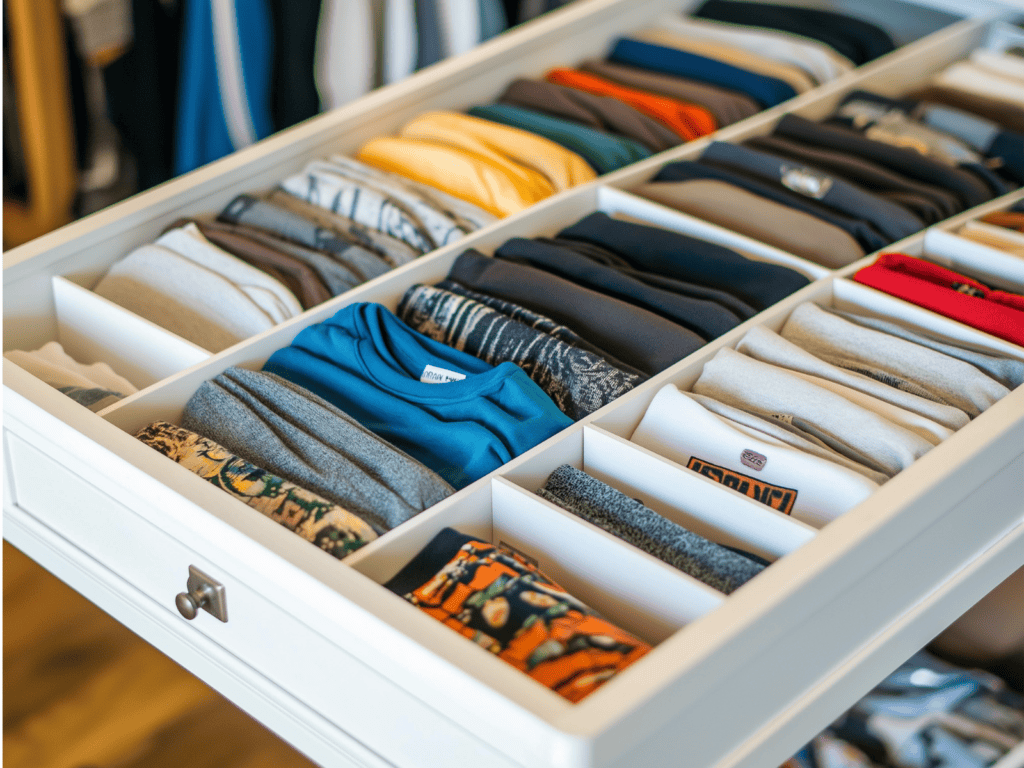
Sort And Fold
Streamline your washing process to save time and energy. Sort clothes by color as they go into the hamper, not on laundry day. Use mesh bags for small items like socks to prevent them from getting lost.
Fold clothes efficiently using the “KonMari” method. This method saves space and makes items easy to see in drawers. To involve older kids in the process, teach this method to them.
Put clothes away immediately after folding. This prevents wrinkles and keeps the laundry area clear. Assign each family member a basket for their folded clothes so they can be distributed easily.
Dresser Organization
Don’t neglect dresser organization. Use drawer dividers to create sections for different types of clothing. This keeps items separate and easy to find. Consider the ‘file folding” method, where clothes are stored vertically, allowing you to see all items at once when you open a drawer.
Dealing with Common Challenges
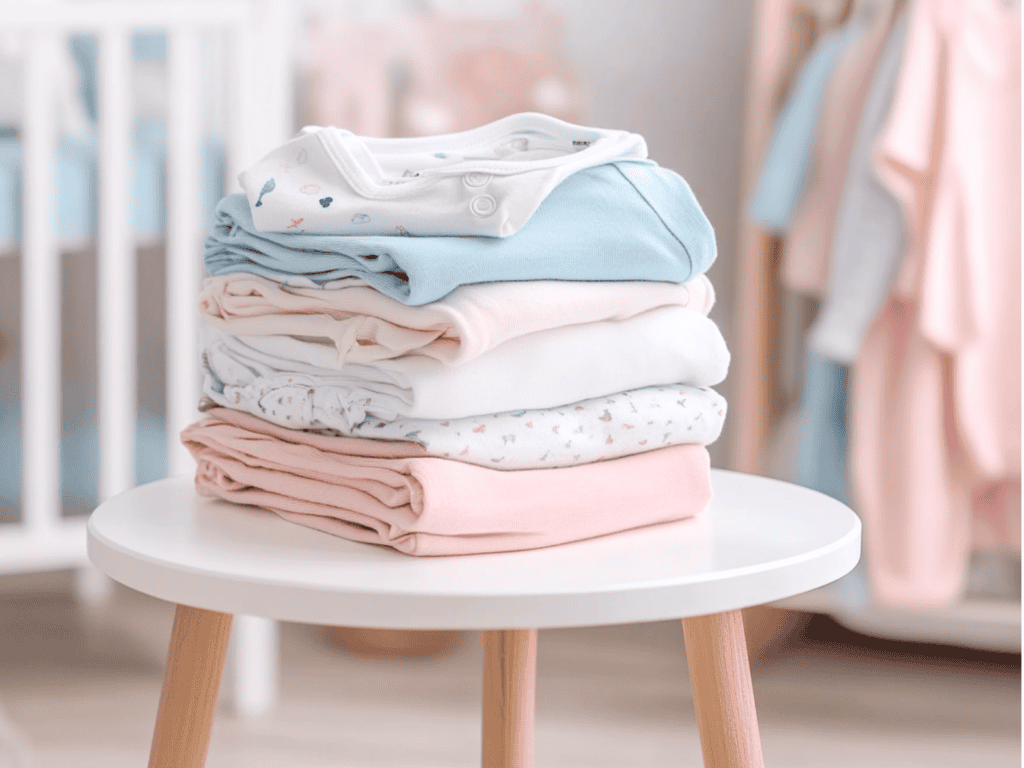
Outgrown Clothing
Growth spurts can disrupt your organization system. Keep a “too small” box in the closet. When you notice something doesn’t fit, put it there immediately. Review this box monthly.
Hand-Me-Downs and Gifts
Be selective about hand-me-downs and gifts. Only keep items that fit your capsule wardrobe approach. It’s okay to politely decline or donate extras.
Donations
Regular clothing donations should be part of your organization routine. Keep a donation box handy as you sort through outgrown or unused items. Teach your kids about the value of giving to others. Many organizations accept gently used children’s clothing, making it easy to pass on items your family no longer needs.
Embracing the New Clothing Zen
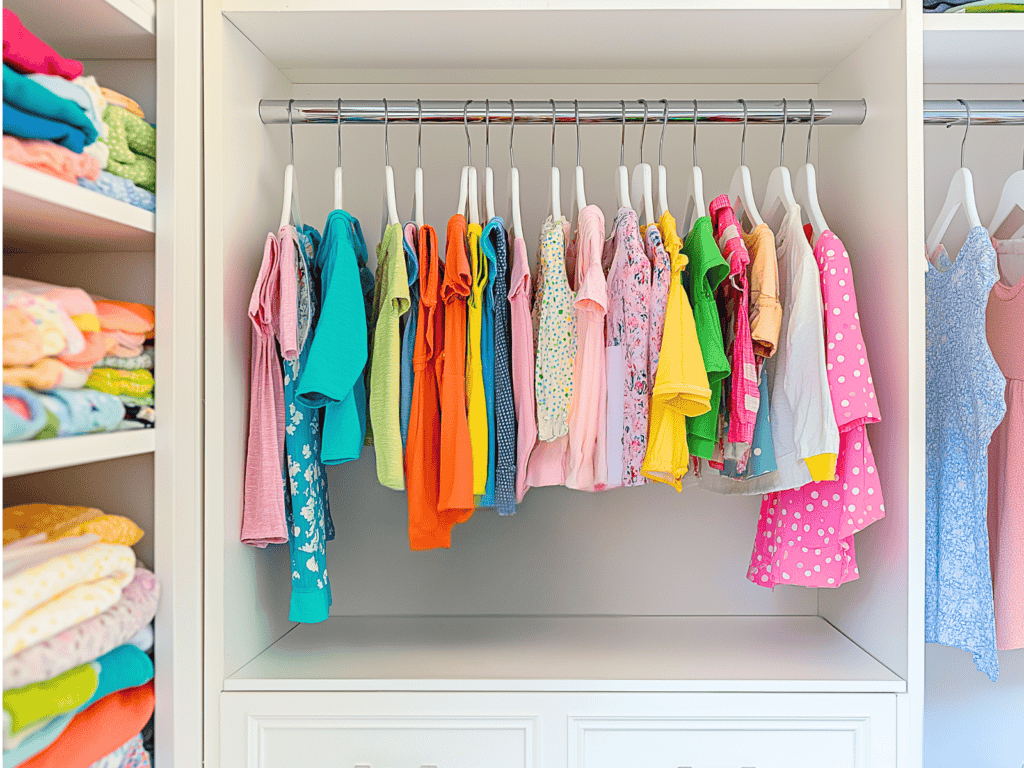
Organizing kids’ clothes doesn’t have to be overwhelming. Remember these key strategies:
- Create a capsule wardrobe
- Use the weekly outfit planner or 7-bin method
- Tackle special categories separately
- Streamline laundry management
- Address challenges proactively
Start small. Begin with one drawer or one week of outfits. Build habits gradually. Celebrate small victories with your kids.
With these systems in place, you’ll save time and reduce stress. Mornings will become smoother, and your kids will gain independence. Embrace this new clothing zen, and enjoy the extra time and peace it brings to your family’s daily routine.
Related Organization Tips
Want to take your organization skills to the next level? Check out these related posts for more helpful tips:
- Kids’ Closet Organization: Learn how to maximize space and create an efficient system in your child’s closet. Use hanging organizers, shelf dividers, and other tools to keep everything in its place.
- Organizing Kids’ Papers: Don’t let school papers and artwork clutter your home. Learn effective strategies for sorting, storing, and displaying your children’s important documents and creations.
These additional resources will help you create a fully organized system for your children’s belongings, from clothes to schoolwork.

